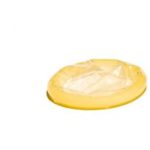Therapy
Hearing loss is a problem that affects a significant portion of the population worldwide. Hearing loss can occur for a number of reasons. The largeast portion of these disabilities are the result of exposure to frequent loud sounds that damage our eardrums. Some hearing loss conditions are not physically related and are temporary, such as overproduction of earwax or temporary but recoverable damage to the eardrums.
Surprisingly ear damage can result from the use of certain medications that can damage our eardrums and hearing.
For people who suffer from permanent hearing loss, whether full or partial hearing loss, finding the best hearing aids is generally their primary goal. Technology today has allowed calibration that improves hearing capabilities in precisely targeted tone ranges. Hearing aids are available now that can balance the hearing potential of all but the most severe hearing conditions.
In order that users see the program through the trying period of becomong accustomed to them, the best hearing aids are those that feel comfortable, are relatively maintenance free and are also user friendly.
What Type of Hearing Aid do you Require?
You may be surprised to find that there are a number of different applications of hearing aids. Choosing the best hearing aids dictates that you understand the different physical properties for the user, their features and user adjustments and learning how they actually operate.
There are the behind-the-ear hearing aids that feature a plastic attachment that fits behind the ear and conducts sound by way of a plastic tube routed from behind the ear to the inner ear.
In the ear models are placed almost inside the ear and can hardly be noticed when the wearer is some distance away. These are great for moderate to severe hearing loss. They are molded precisely from custom made impressions so the fit is perfect and completely unobtrusive. Due to their close proximity to the sound amplifying components of your body, excellent results can be achieved.
Variations include in-canal, mini-canal and completely-in-canal hearing aids. These are great for those with mild to moderately severe cases of hearing loss, not total hearing loss. These are moght be considered the best hearing aids in the market because of their wide range of coverage and because they are nearly invisible on casual contact with other people.
Receiver-in-the-ear aids look similar to behind-the-ear aids, but the physical placement of the receiver differs slightly. The plastic mold that extends from behind the ear to the inner ear is thin when compared to that of behind the ear hearing aids.
It is wise to do some research and familiarize yourself with the features and benefits of the various styles of hearing aids. The next step should be consulting with an audiologist who will be able to fully diagnose your hearing loss.
After thorough testing and analysis, his experience and knowledge will help guide you to selecting the best hearing aids to resolve your particular hearing issues. The best hearing aids for you will be dictated primarily by the severity of your hearing loss. In most cases you will find that style and application will be selectable by you and the technical design performed the professionals.
information
Hearing Aid Resources
For Information about Caring For The Elderly please visit
Caring For the Elderly
Get free information about baby shoes
